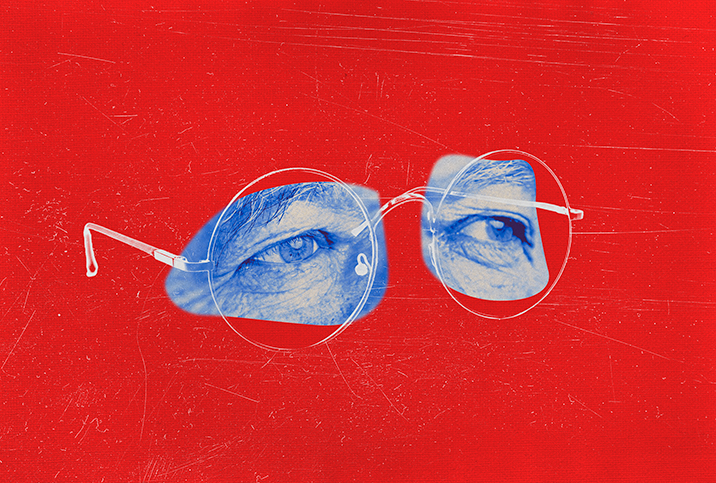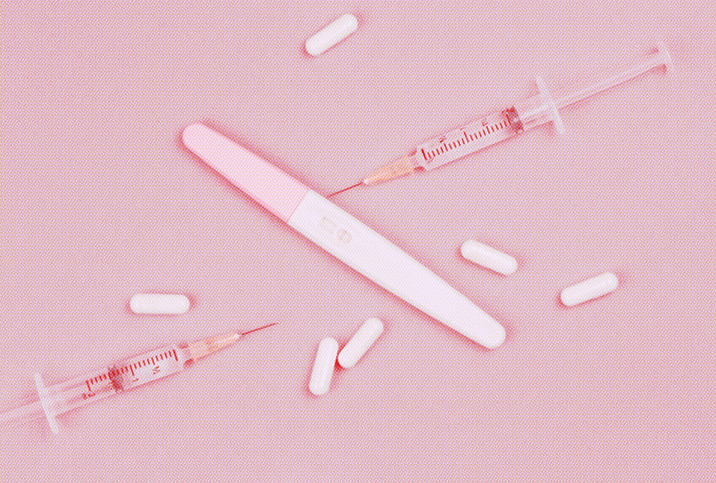Caring for Your Eyesight After 40: What You Should Know

If you're older than the age of 40, chances are you've been told plenty of times about the list of regular preventive checkups you should start attending to maintain your health.
Experts say even though they're often overlooked, preventive eye checkups should be added to your list of regularly held appointments once you turn 40, even if you think you have perfect vision.
The best strategy is to discover any problem before it becomes something that requires serious attention. Vision impairment and loss are often associated with a reduced quality of life, unintentional injuries and loneliness. Communication in relationships can also be hampered, as so much of any conversation is filled with visual cues such as hand gestures, facial expressions and eye contact.
More than 12 million Americans older than 40 have vision impairment, according to the Centers for Disease Control and Prevention (CDC).
Getting checked out
Individuals with no vision- or eye-related symptoms, or risks for eye disease—such as diabetes, high blood pressure or family history—should still schedule a baseline screening for eye disease with their ophthalmologist at age 40, according to the American Academy of Ophthalmology. Based on your screening results, your eye doctor will tell you how often you should come back for additional preventive screenings. As for individuals with vision- or eye-related symptoms, or who are at risk for eye disease, there's no need to wait until you're 40 to see your eye doctor. The sooner you schedule your appointment, the better.
Robert C. Layman, O.D., president of the American Optometric Association, said it's important to remember that similar to the rest of the body, the eyes and vision change over time. Fortunately, if detected early, conditions that cause vision loss can be minimized before complications set in.
"It is estimated that at least 40 percent of vision loss in the United States is either preventable or treatable with timely intervention, yet many people are undiagnosed and untreated," Layman explained. "This number is expected to continue to rise due to the aging of the U.S. population and the increase in diabetes and other chronic diseases."
Across the country every year, doctors of optometry examine asymptomatic patients who come in for comprehensive eye examinations, only to then diagnose them with serious eye and health conditions, including glaucoma, diabetes, macular degeneration, brain tumors and others, he said.
Vision and overall health
The risk of developing eye and vision problems increases around 40 to 60 years old. Problems with the eyes often may be related to problems in other parts of the body.
Vision problems have been linked to diseases such as glaucoma, diabetes, high blood pressure, autoimmune conditions and even sexually transmitted infections (STIs). Syphilis, chlamydia, gonorrhea, herpes simplex virus, hepatitis B and pubic lice can affect vision and the eyes, and a lack of treatment can lead to serious eye complications, according to the Canadian Association of Optometrists. HIV/AIDS patients are particularly vulnerable, as an estimated 75 percent to 80 percent of HIV-infected patients require treatment for an eye disorder during their lifetime.
The connection between eye health and overall health is a direct one, said Andrew Iwach, M.D., a clinical spokesperson for the American Academy of Ophthalmology, a practicing ophthalmologist and the executive director of the Glaucoma Center of San Francisco.
"If you think about it, the eye is the only place in the body where we can see a bare artery, vein and nerve," Iwach said. "So by looking into the eye, we can actually get a sense and pick up diseases that may be going on; for example, untreated diabetes or uncontrolled hypertension. The way the pathways or the visual system runs through the head through the brain is kind of right in the middle. So you know, when you talk about real estate, it's always about 'location, location, location.' Well, in looking at the health of a person by looking at their eyes, we can get a lot of information about what is going on."
Iwach said this intricate link between eye health and overall health puts an eye doctor in perfect position to help patients maintain and improve their vision, and also help connect the dots from the information they gather in eye exams to other possible systemic illnesses that could otherwise go untreated.
Make that appointment
One of the most common misconceptions is that if your vision seems fine and you're not experiencing any other eye problems, regular checkups as you age are not important, Layman said.
"Regular eye examinations are an important part of preventive health care, which is essential since this is the time in life when your risk for developing a number of eye and vision problems increases," Layman explained. "Many eye and vision problems have no obvious signs or symptoms, so you might not know a problem exists. Patients may not realize that health problems affecting other parts of their body can affect their vision as well. People with diabetes or hypertension, or who are taking medications that have eye-related side effects, are at greatest risk for developing vision problems."
Glaucoma, a group of eye conditions that can cause blindness, is an example of an eye disease that often shows no symptoms until the damage has been done.
"If it's present, it typically affects the side vision first so patients have no idea that they're losing vision," Iwach said. "And that type of vision loss, at the moment, is irreversible. So we can see a patient and they have no clue that they're having problems. The good news is the visual system is remarkably stable for most patients, however, things can go wrong. And if you don't monitor it or check it, then it's harder. We always can do something, but it just gets harder to maintain vision for patients if they don't have routine exams."
Proactive steps you can take
The lens of the eye naturally changes as we age, which causes some vision changes that are not preventable.
"Adults in their early to mid-40s may start to experience problems seeing clearly at close distances, especially when reading and using various digital devices," Layman said. "This normal aging change in the lens of the eye causing it to gradually lose its focusing ability is called presbyopia. This is a condition that everyone gets as they age and while it may seem to occur suddenly, a reduction in vision actually occurs over several years. You may even begin to experience changes as early as childhood and continue to advance as you age. Presbyopia can't be prevented or cured, but with the proper treatment, most people should be able to regain clear, comfortable near vision for all of their lifestyle needs."
However, there are steps you can take to protect your eye health and keep your vision as good as it can be for as long as possible. Aside from keeping routine comprehensive eye exams, Layman said it's important to give your eyes a break from screens.
"Most Americans, including children, spend at least seven hours or more a day using computers or other digital devices such as tablets and smartphones," Layman said. "This constant activity increases the risk for dry eye, eyestrain, headaches and fatigue. The AOA recommends practicing the 20-20-20 rule: Every 20 minutes, take a 20-second break and look at something 20 feet away."
For another protective measure, sunglasses can contribute more than just a fashionable look.
"No matter the season, it's important to protect your eyes from the sun's harmful rays," Layman explained. "The longer the eyes are exposed to solar radiation, the greater the risk of developing cataracts, eye cancer, pterygium [surfer's eye] or macular degeneration later in life. Choose a pair of sunglasses that blocks more than 95 percent of UVA and more than 99 percent of UVB radiation."
Keeping a healthy diet, maintaining regular exercise and avoiding smoking are also powerful steps you can take to protect your eyes.
"As part of a healthy diet, eat five servings of fruits and vegetables each day, particularly leafy greens such as spinach and kale," Layman recommended. "Nutrients such as the antioxidants lutein and zeaxanthin, essential fatty acids, vitamins C and E and the mineral zinc help protect eyesight and promote eye health. Since the body doesn't make these nutrients naturally, it's important that they are incorporated into a daily diet and, in some cases, supplemented with vitamins."
Editor's note: These statements have not been evaluated by the Food and Drug Administration. Our medical experts advise that you consult with your primary healthcare provider before you begin using a supplement. This information is not intended to diagnose, treat, cure or prevent disease.




















